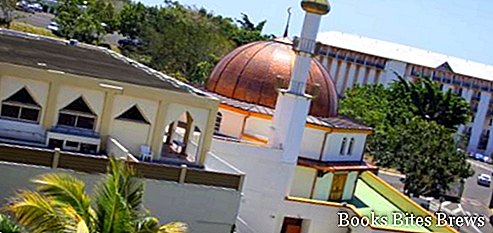What to see in Reunion, where the origin, meaning and history of this Mascarene island is located, surrounded by fascinating backdrops and characterized by a territory where nature dominates.
Tourist information
La Reunion, or island of Reunion, is located in the Indian Ocean about 600 km from Madagascar and is part of the Mascarene archipelago, about 200 km from Mauritius.
The third largest island in Africa by extension, Reunion constitutes both a region and an overseas department of France, and therefore falls within the European Union.
To the north is the capital Saint Denis.
As for the geological aspect, it is an island of volcanic origin characterized by wild nature, with a largely mountainous landscape and the Piton de la Fournaise volcano, 2631 meters high, still active.
The highest mountain is the Piton des Neiges, which exceeds 3000 meters in altitude.
The island has three circular depressions of volcanic origin, Cirque de Salazie, Cirque de Cilaos and Cirque de Mafate.
About history, the island of Reunion was discovered at the beginning of the sixteenth century by Portuguese navigators, who called it Santa Apolonia.
In 1642, when it was occupied by France, it was renamed in Ile Bourbon, while in 1793, after the French revolution, it was renamed again in Reunion.
What see
Reunion is a mountainous island of volcanic origin, appreciated for its unique and spectacular landscapes.
The highest mountain corresponds to the ancient Piton de Niège volcano, which reaches 3,069 meters above sea level, called in this way because in winter its summit is often covered with snow.
Recommended readings- Mauritius (Mascarene): what to see on the island
- Mauritius (Indian Ocean): useful information
- Maldives (Indian Ocean): useful information
- Seychelles (Indian Ocean): useful information
- Zanzibar (Tanzania): what to see in the archipelago
The other peak of the island is the still active volcano Piton de la Fournaise, about 2900 meters high, characterized by non-violent eruptive phenomena, with very fluid lava flows, directed towards the uninhabited part of the island.
Luxuriant vegetation covers the mountains, while majestic waterfalls plunge into the valleys, overcoming dizzying differences in height.
A deep sea full of life surrounds the island, in some areas of the coast the coral reef makes the seabed fascinating.
On this island people of different races met, the Africans, the Chinese, the Malaysians and the Indians joined the French.
The fusion of all these ethnic groups gave birth to the Creole people, who today inhabit this wonderful island.




